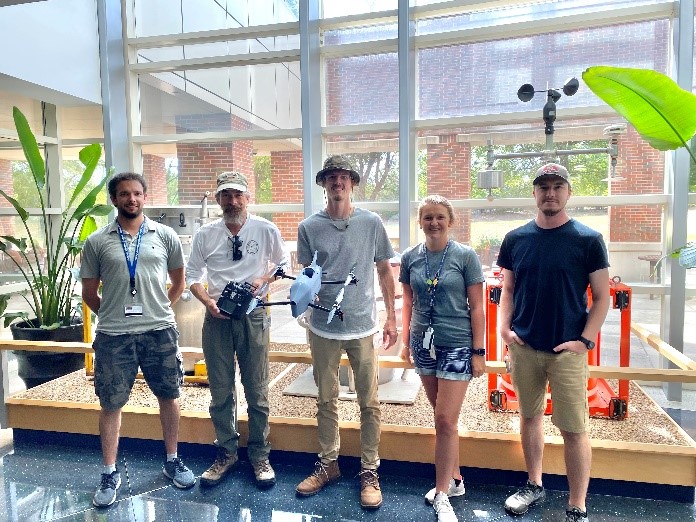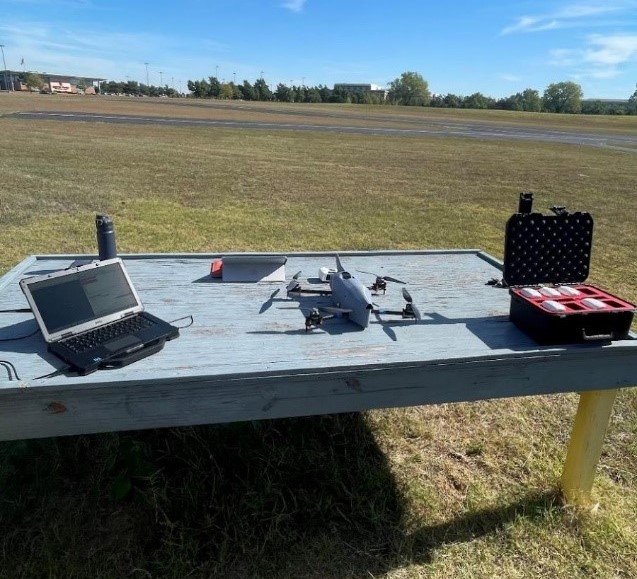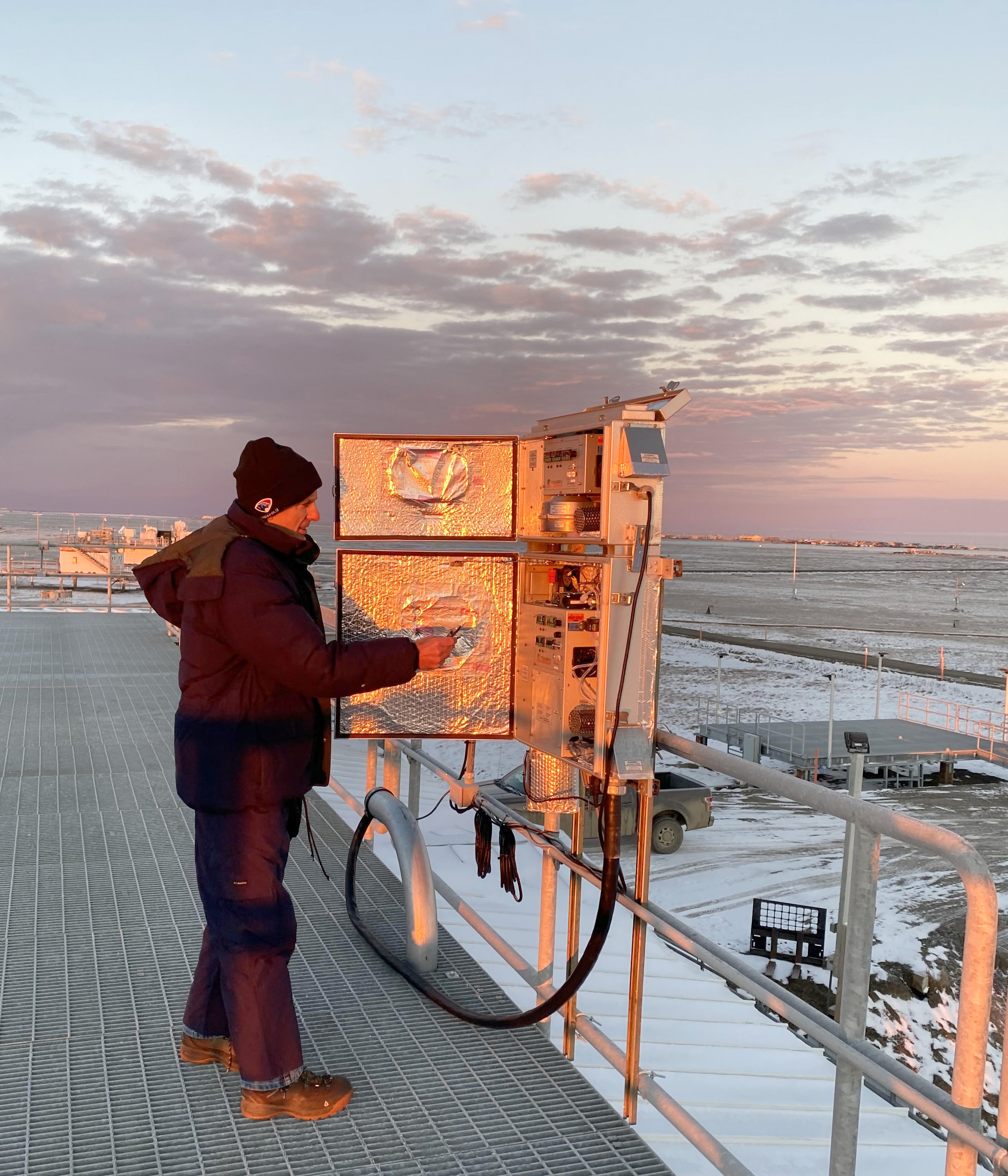ARL Weekly News – Oct 7, 2022
| Recent Events |
SORD-ID Participates in Local Safety Fairs
Recently ARL SORD-ID Meteorologists Jason Rich and Matt Brewer and Administrative Assistant Karly Curtis participated in three safety fairs hosted by organizations associated with the Department of Energy-Idaho Operations Office. These events proved to be an excellent opportunity to get out in the community to increase awareness of the SORD-ID mission.
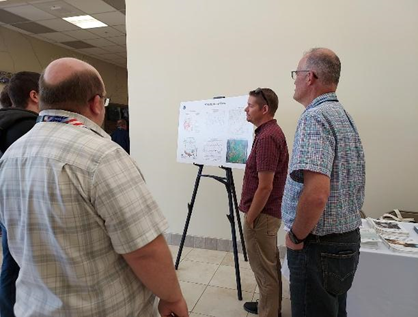
SORD-ID at the DOE’s Idaho National Laboratory (INL) Town Health & Safety Fair.
IEC Safety Day Fair: The Idaho Environmental Coalition (IEC) requested SORD-ID’s presence at their Aug 16 safety fair. Jason Rich and Karly Curtis staffed a booth that showcased interesting facts about INL (Idaho National Laboratory) weather and distributed NOAA weather safety brochures. Weather sensors and a datalogger were also displayed as examples of how NOAA SORD-ID monitors INL weather. Visitor comments included “I appreciate the INL alerts I get from you guys”, “I check your website every day,” “I use your data for planning my projects”, and “I LOVE NOAA”. Estimated attendees were about 200.
The INL/RWM Safety Days Fair: the event was held on Sept 1 at INL’s Radioactive Waste Management (RWM) complex. The event had a ‘county fair’ theme with costumed Safety Team members, games, prize drawings, and BBQ. Meteorologists Jason Rich and Matt Brewer and Administrative Assistant Karly Curtis staffed the NOAA booth and fielded weather questions and comments from the INL employees.
It was clear from the participants that SORD-ID’s weather alerts are widely known and very much appreciated! Many questions were asked related to the current drought and the abnormally warm weather experienced during the period. SORD-ID meteorologists were able to provide expert answers. Estimated participant count was about 400.
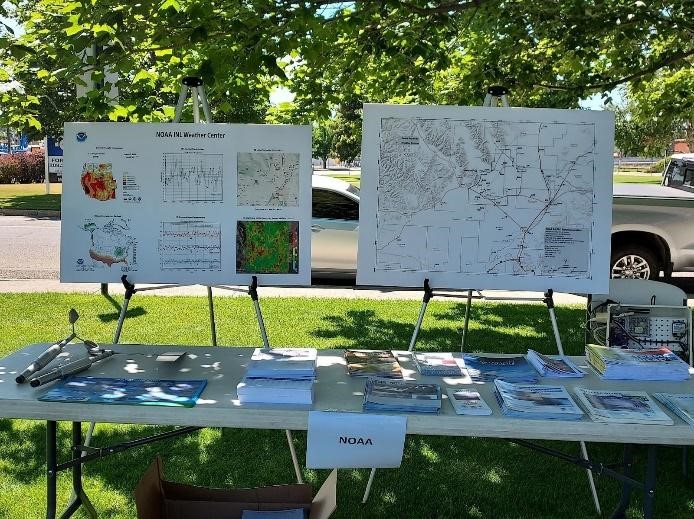
SORD-ID table at the Idaho Environmental Coalition Safety Fair.
The INL Town Health & Safety Fair: This annual event was held on Sept 26 at the INL Energy Innovation Lab Meeting Center. Jason, Matt, and Karly again represented NOAA, fielding weather questions from INL employees. Jason and Matt had some very interesting discussions with fair attendees, brought about by questions and observations of NOAA’s work. This event was another great opportunity to be out in the community and share NOAA’s mission. Estimated participant count was about 700.
Travis J. Schuyler and Edward Dumas traveled to Norman, OK for training on University of Oklahoma’s CopterSonde rotary-wing sUAS.
October 2-5 2022, Travis J. Schuyler and Edward Dumas traveled to Norman, OK for construction, flight testing, and training on the latest version of the University of Oklahoma’s CopterSonde rotary-wing small uncrewed aircraft system (sUAS). This sUAS is custom built with temperature, pressure, and moisture sensors inside a 3D-printed ducted shell. The CopterSonde also features custom autopilot software that faces the sUAS into the wind, acting as a wind vane for optimal sensor aspiration and wind direction determination. Wind speed and direction is derived from inertial measurements. This sUAS enables collaborative thermodynamic and kinematic observations in the boundary layer, as several CopterSondes are deployed by NSSL, CIWRO, and OU. Observations from these platforms will be used to better sample surface and boundary layer processes and improve our ability to parameterize them in weather forecasting models. During their visit, Travis and Ed also met with Elizabeth Smith and Tyler Bell to tour NSSL’s facilities at the National Weather Center.
Barrow Atmospheric Baseline Observatory Visit
Paul Kelley and Winston Luke traveled to the NOAA Barrow Atmospheric Baseline Observatory in Utqiagvik (formerly Barrow), Alaska to service instrumentation measuring mercury species in the atmosphere there. The instruments were installed at the observatory in October 2021 and have been in continual operation since. In addition to conducting routine maintenance and repairs, the two installed an important upgrade which allows for system calibration both internally to the mercury detector and at the sampling inlet, in order to quantify any potential chemical transformations which may occur in the sampling path and thus generate inaccurate (biased) data.
Papers Accepted
Hartig, K., E. Etziperman, and C.P. Loughner (2022), Processes contributing to North American cold air outbreaks based on air parcel trajectory analysis, Journal of Climate, accepted.
Abstract: Wintertime cold air outbreaks are periods of extreme cold, often persisting for several days and spanning hundreds of kilometers or more. They are commonly associated with intrusions of cold polar air into the midlatitudes, but it is unclear whether the air mass’s initial temperature in the Arctic or its cooling as it travels is the determining factor in producing a cold air outbreak. By calculating air parcel trajectories for a pre-industrial climate model scenario, we study the role of the origin and evolution of air masses traveling over sea ice and land and resulting in wintertime cold air outbreaks over central North America. We find that not all Arctic air masses result in a cold air outbreak when advected into the midlatitudes. We compare trajectories that originate in the Arctic and result in cold air outbreaks to those that also originate in the Arctic but lead to median temperatures when advected into the midlatitudes. While about one-third of the midlatitude temperature difference can be accounted for by the initial height and temperature in the Arctic, the other two-thirds is a result of differences in diabatic heating and cooling as the air masses travel. Vertical mixing of cold surface air into the air mass, while it travels, dominates the diabatic cooling and contributes to the cold events. Air masses leading to cold air outbreaks experience more negative sensible heat flux from the underlying surface, suggesting that pre-conditioning to establish a cold surface is key to producing cold air outbreaks.



